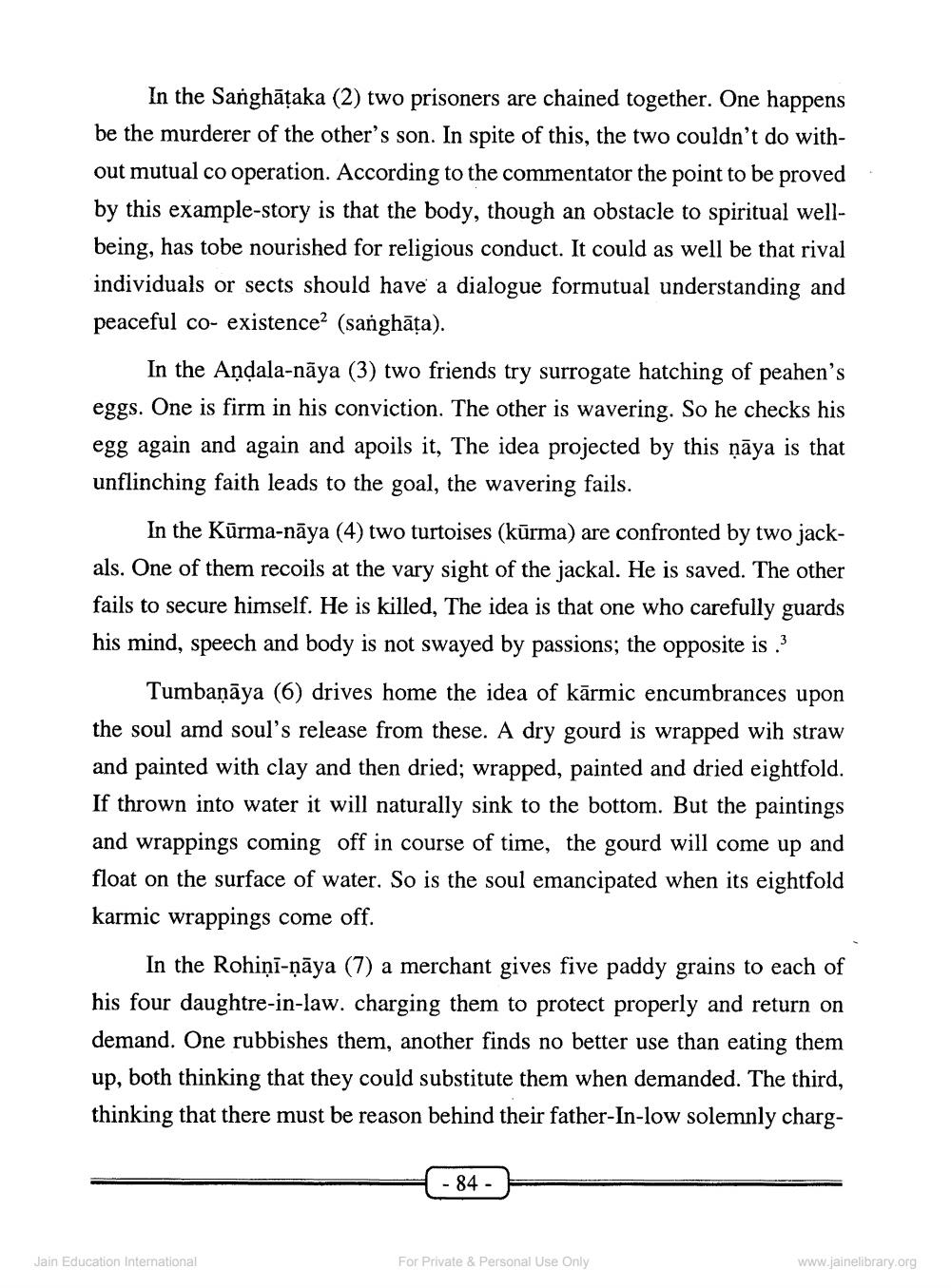________________
In the Sanghāțaka (2) two prisoners are chained together. One happens be the murderer of the other's son. In spite of this, the two couldn't do without mutual co operation. According to the commentator the point to be proved by this example-story is that the body, though an obstacle to spiritual wellbeing, has tobe nourished for religious conduct. It could as well be that rival individuals or sects should have a dialogue formutual understanding and peaceful co- existence? (sanghāța).
In the Andala-nāya (3) two friends try surrogate hatching of peahen's eggs. One is firm in his conviction. The other is wavering. So he checks his egg again and again and apoils it, The idea projected by this ņāya is that unflinching faith leads to the goal, the wavering fails.
In the Kūrma-nāya (4) two turtoises (kūrma) are confronted by two jackals. One of them recoils at the vary sight of the jackal. He is saved. The other fails to secure himself. He is killed, The idea is that one who carefully guards his mind, speech and body is not swayed by passions; the opposite is .?
Tumbaņāya (6) drives home the idea of kārmic encumbrances upon the soul amd soul's release from these. A dry gourd is wrapped wih straw and painted with clay and then dried; wrapped, painted and dried eightfold. If thrown into water it will naturally sink to the bottom. But the paintings and wrappings coming off in course of time, the gourd will come up and float on the surface of water. So is the soul emancipated when its eightfold karmic wrappings come off.
In the Rohiņā-ņāya (7) a merchant gives five paddy grains to each of his four daughtre-in-law. charging them to protect properly and return on demand. One rubbishes them, another finds no better use than eating them up, both thinking that they could substitute them when demanded. The third, thinking that there must be reason behind their father-In-low solemnly charg
- 84 -
Jain Education International
For Private & Personal Use Only
www.jainelibrary.org




